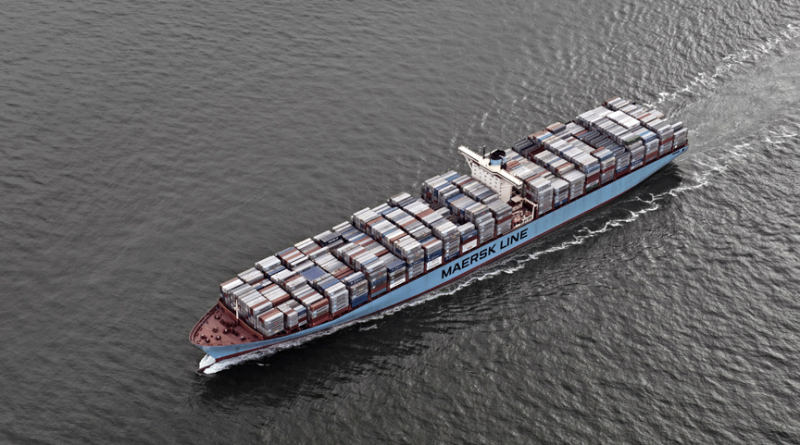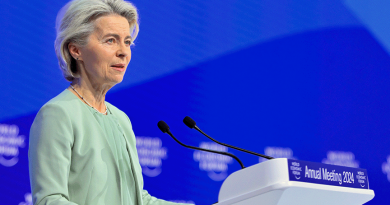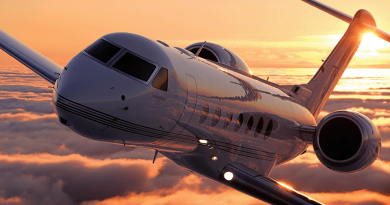Containing trade
Dr Graham Bright is Head – Compliance & Operations, at Euro Exim Bank
As the world implements policies to cope and live with COVID-19 as it re-emerges in new strains, and battles with exponential rising prices for many raw materials and utilities, supply chain inflation, fragmentation, trade is still global.
Businesses across the globe, especially multinationals, cannot stand idle whilst fundamental costs are rising, as we witness an unprecedented era of geopolitical turmoil, recession in leading economies and bleak financial outlook.
With US dollar appreciation having almost reached parity with the Pound Sterling (the highest rate in almost 40 years), businesses are wary of committing to investment plans, as companies assess whether the artificially hiked prices of goods truly reflect the value of those goods.
Whilst the current situation is no doubt cyclical, it is bad news in the short term for most economies. However, the hiatus in trade and forced review of internal strategies has prompted progressive firms to re-evaluate how they will identify and harness future opportunities.
These include product positioning, reducing paper and manual processes, with investment in technology enablers such as trade blockchains which will be of fundamental benefit in improving competitiveness, cost-control and ultimately market share and sustainability.
Globally, trade is predicted to grow by 70% to almost US$30 trillion by the end of this decade with the majority transported by sea. Having encountered supply difficulties corporates have sought out new sets of suppliers, which were simply not in the supply chain before, often in land locked locations, with challenges of transport, customs and delivery.
But the race for new supplies has led to a new logistical issue, with news of a massive surplus of containers in the US. What this means is that ports in North America could become overwhelmed by a build-up of empty containers, as trans-Pacific supply chains and transportation times gradually return to pre-pandemic levels.
Whilst our institution has been involved in the document and instrument side of the business, for example dealing with compliance and operations with letters of credit, standbys, bonds and guarantees, it is hard to ignore the contribution, impact, versatility and simplicity of containers, the true enablers of international trade.
Containers
Just boxes you may think, but the humble container is the true star. Why? Its fundamental benefits in rationalising, standardising and its re-useability dramatically altered the cost and efficiency model for the industry.
As recently as 1956, an American trucking company owner named Malcolm McLean bought a shipping company. His requirement was simple, namely, to find an easier cheaper way to get his goods onboard ship, without damage or pilferage, quickly and cost-effectively. In the past, it took crews of specialist loaders, stevedores, and dockers and adherence to union rules to physically move goods from truck to hold.
The answer was to move a stackable storage vessel, regardless of contents (ie perishable, non-perishable, chemical, plastic or solid), not the goods, and the simple multi-use intermodal steel box (loaded with goods at its starting location, to be transported via road, rail, and sea to the final destination without the goods needing to leave the container) we know today was incepted and patented.
The additional breakthrough was the standardisation of size, through negotiations with the ISO Standards Organisation. The outcome was set the standard sizes that then allowed each ship, port and truck to be able to handle the dimensions with ease.
Today, whilst dimensions of containers have remained constant, a number of adaptations for types of goods have become common. And whole industries have been established to create the right environment for transport of goods requiring heat or refrigeration.
This ensure that goods, no matter how large, or dangerous, may be safely loaded and transported anywhere, to arrive in peak condition.
Containers carry general cargo by rail and sea and their size makes them ideal for storage, enabling liquid cargo or dry bulk shipping, and the wide variety of goods has led to the introduction of container variants.
Open or hard-top containers cater for cargo exceeding regular heights, which will incur higher rental and insurance fees due to the lesser strength of roof materials. Flat racks provide the support for excessive size goods, secured on strong platforms, whereas platform containers transport heavy and out of gauge cargo with high resistance mounting brackets to make transport safer.
Tank containers are commonly used to transport liquid chemicals and beverages, where a tank is constructed inside a general container, which, to avoid rapid movement of the cargo during transport, must be at least 80% filled.
The humble container is the true star. Why? Its fundamental benefits in rationalising, standardising and its re-useability dramatically altered the cost and efficiency model for the industry
Accidents will happen
Fleets are getting large and the physical size of ships has increased from the Emma Maersk, with a capacity of 15,000 containers (TEU) 10 years ago to Ever Alot, with a capacity of 24,000 containers.
The number of container ships in the global fleet increased from 4,966 in 2011 to 5,534 ships in 2021, while the carrying capacity of the global merchant fleet reached roughly two billion deadweight tons in 2020.
However, not all is well on the high seas. Between 2011 and 2020, some 876 vessels were lost at sea. The majority of ships lost during this period – around 348 – were cargo ships.
Containers stacked on giant vessels are falling over at an alarming rate, resulting in millions of dollars of cargo lost as pressure to speed deliveries raises the risk of safety errors.
Why the losses?
One immediate cause is the effect of global warming causing storms and unpredictable weather. And time pressure is encouraging captains to risk entering a storm rather than take lengthy diversions.
With megaships, more containers are being stacked higher and to capacity, putting undue pressure on operators to deliver faster as demand picks up for all manner of goods. Coupled with inadequate container locking, whole voyages may be put at risk as seen in the following examples:
-One Apus – weather caused the loss of more than 1,800 containers at an average of $50,000 per box, estimated losses are $90 million in cargo.
-MOL Comfort – broke in two and sank with its entire cargo of 4,293 containers into the Indian Ocean, resulting in $400 million claim.
-Maersk Essen – lost about 750 boxes valued at $12 million.
-Maersk Eindhoven – lost 260 containers when it lost power in heavy seas.
-Ever Given blocked Suez Canal traffic for a week, affecting hundreds of vessels. Although none of the 20,000 containers were lost, late arrival and disruption sent shock waves through the industry. The impact on global trade is ongoing, with financial loss calculated to be > €2 billion.
-Felicity Ace – carrying 4,000 luxury cars – cargo value of $400 million.
-MSC ZOE – about 200 containers fell into the sea, containing mainly TVs, toys, and furniture on the shores of the Netherlands.
The importance of insurance
These are just some of the cases, and as the old adage says “worse things happen at sea,” clearly showing that you cannot fully protect your cargo from accidents.
Even if it is not client containers that went overboard, those on the ship may be damaged along with the goods being transported inside the container. With this insurance, the importer can receive monetary compensation if the container suffers damage, provided they show the relevant documents.
Containers can be insured against adverse weather conditions or a breakdown. Freight forwarder or carrier liability insurance alone is not enough. If the cargo has not been properly insured, all costs, including rescue cost, pass to companies transporting the goods.
Environment impact
Pollution of the marine environment caused by overboard containers is a growing issue. Once breached, containers may be extremely hazardous to sea ecosystems; they may contain acid, alcohol, biological or radioactive goods, and heavy plastic manufactured products. They pose not only a threat to the environment, but also watercraft and coastal residents.
So far, none of the recent container accidents has been directly attributed to safety lapses. The International Maritime Organization said it is still awaiting results of investigations into the latest incidents and cautioned about making any conclusions before that.
But many experts say the situation has grown more dangerous because of pressure on supply chains since the pandemic. When ships approach heavy weather, captains have the option to steer away from the danger. But the attitude is “don’t go around the storm, go through.”
There’s also the health and safety of the seafarers at stake. Raging storms can easily cause multiple tiers of 40-foot containers to displace and topple over causing panic and potential loss of life. The most effective way forward is for shippers to go around storms and maintain vessels properly.
Bottom of form
Countries whose flags the ships are sailing under are required to take responsibility for issuing safety certificates for vessels, while ports that the vessels call at are responsible for ensuring rules on loading containers are followed. This can clearly vary accordingly across the globe.
And spare a thought regarding the ships themselves. As tighter environmental regulations come into force across the globe, newer ships are needed to replace ageing vessels especially across Asia and the Mediterranean.
Conclusion
Moving containers on some of the largest ocean-going ships the world has ever seen, with their ever-increasing capacity, is still the safest and cheapest mode of transport for goods across the globe.
And even when containers have reached the end of their ocean-going or road haulage lives, the environment benefits as they can be repurposed as shops, houses, tool stores, playground structures and modern art, effectively recycled and re-used, albeit in a different guise. Whilst electronic documents, blockchain, AI etc all have their place in making trade easier, it is still the containers, the ships and logistics that power world trade.




